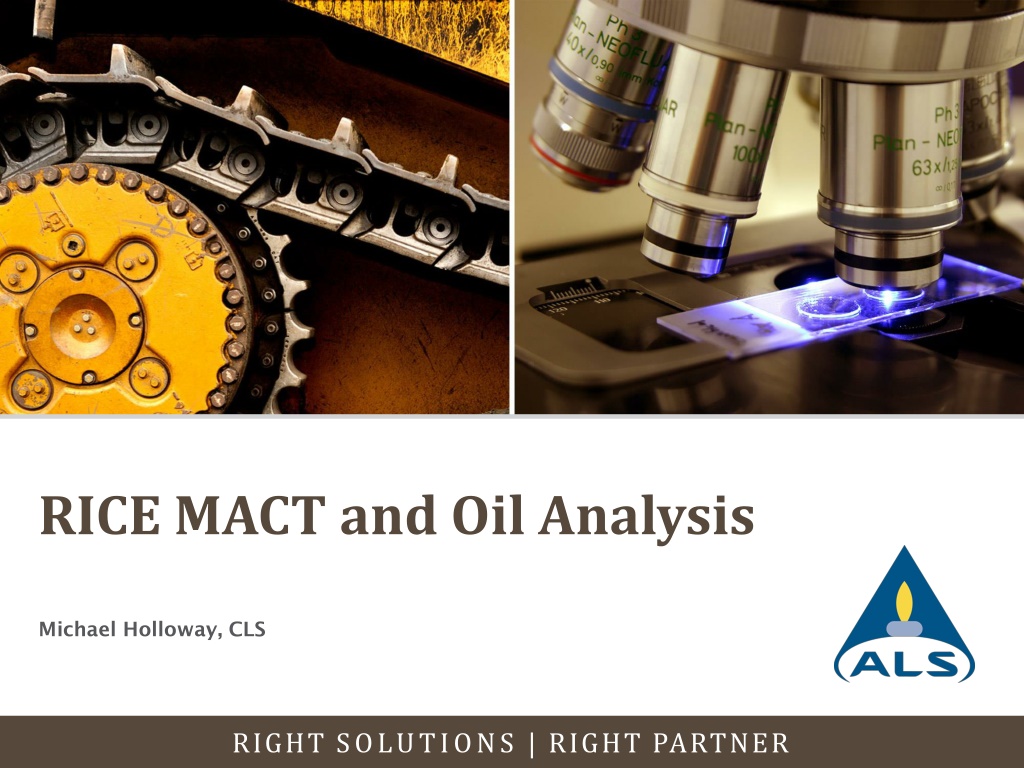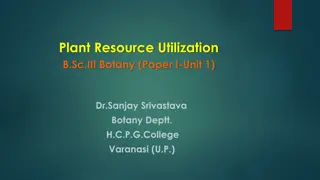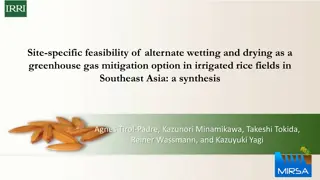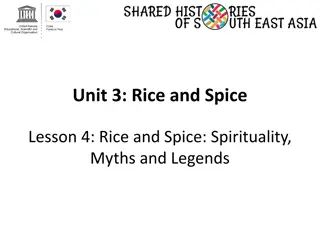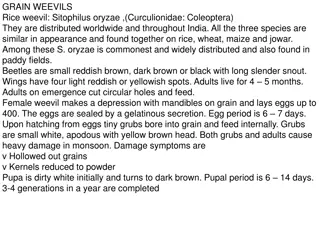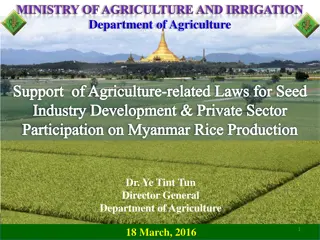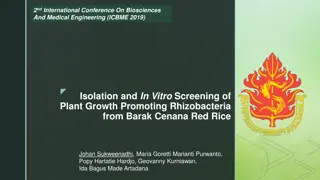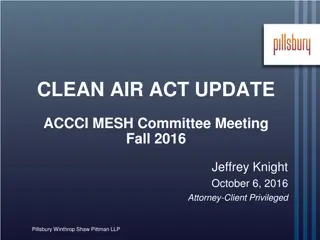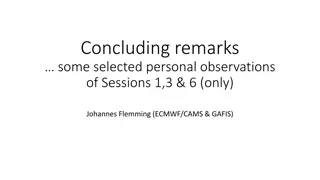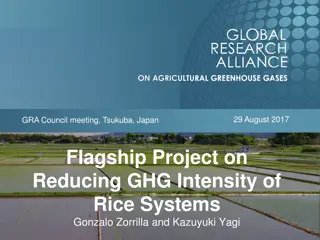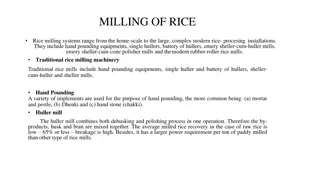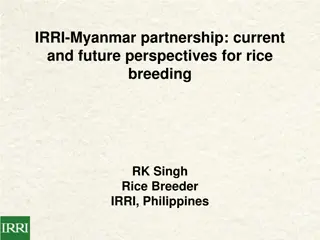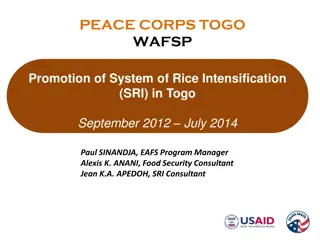Understanding RICE MACT and its Impact on Air Quality
The RICE MACT (Maximum Achievable Control Technology) regulation aims to reduce emissions of Hazardous Air Pollutants (HAPs) from reciprocating internal combustion engines. It applies to major industrial sources emitting significant amounts of HAPs and outlines emission requirements for different types of engines. The regulation targets engines like Compression Ignition (CI), Spark Ignition 4-stroke rich burn (4SRB), Spark Ignition 2-stroke lean burn (2SLB), and more. Learn about the categories of stationary RICE sources affected by this regulation and how to determine if it applies to your operations. Compliance with RICE MACT is essential for improving air quality and environmental health.
Download Presentation

Please find below an Image/Link to download the presentation.
The content on the website is provided AS IS for your information and personal use only. It may not be sold, licensed, or shared on other websites without obtaining consent from the author. Download presentation by click this link. If you encounter any issues during the download, it is possible that the publisher has removed the file from their server.
E N D
Presentation Transcript
RICE MACT and Oil Analysis Michael Holloway, CLS RIGHT SOLUTIONS | RIGHT PARTNER
What is the RICE MACT? The National Emission Standards for Hazardous Air Pollutants (NESHAP) for Reciprocating Internal Combustion Engines (RICE). Often called the RICE MACT or GACT - MACT - Maximum Achievable Control Technology for Major Sources of Hazardous Air Pollutants (HAPs) - GACT - Generally Achievable Control Technology for Area Sources of HAPs The purpose of RICE MACT is to reduce the emissions of Hazardous Air Pollutants (HAPs) from reciprocating internal combustion engines. Major industrial sources that emit 10 tons a year or more of a single Hazardous Air Pollutant or 25 tons a year or more of a combination of Hazardous Air Pollutants. 2
Why RICE MACT? The purpose of RICE MACT is to reduce the emissions of Hazardous Air Pollutants (HAPs) from reciprocating internal combustion engines (RICE) located at major industrial sources of air HAPs or area sources. 5
Who Does It Affect - Stationary RICE Source Categories Emergency stationary RICE Limited use stationary RICE Stationary RICE that combust landfill gas or digester gas equivalent to 10 percent or more of the gross heat input on an annual basis Compression Ignition (CI) (Diesel) Spark ignition 4-stroke rich burn (4SRB) Spark ignition 2-stroke lean burn (2SLB) Spark ignition 4-stroke lean burn (4SLB) 6
RICE MACT Emission Requirements Existing and new 4-stroke rich burn (4SRB) engines either reduce formaldehyde by 76% or limit the formaldehyde concentration to 350 ppb. New 2-stroke lean burn (2SLB) engines either reduce carbon monoxide (CO) by 58% or limit the formaldehyde concentration to 12 ppm. New 4-stroke lean burn (4SLB) engines either reduce CO by 93% or limit the formaldehyde concentration to 14ppm. New compression ignition (CI) engines either reduce CO by 70% or limit the formaldehyde concentration to 580 ppb. 9
Types of RICE MACT Requirements Notifications Emission Limitations Controls Operating Limitations Fuel Requirements Performance Tests Monitoring Recordkeeping Reporting 10
Management Practice Hoses and Belts must be inspected on all of these engines after 500 hours, or annually, and replaced as necessary. Air cleaners must be inspected at 1000 hours, or at least annually. Oil and Filters must be replaced at 500 hours, or annually, except for non-emergency engines smaller than 100 HP at major sources or smaller than 300 HP at area sources where this inspection can be deferred until 1000 hours. For engines with a compliant oil analysis program, these limits may be extended. 11
Exempt from RICE MACT If and only if the engine operates as an emergency engine under the rule and is located at residential, institutional, or commercial establishments that are area sources for HAPs Residential could be an apartment complex or a house Institutional establishments means places such as general medical centers and hospitals, nursing homes, research centers of higher education, correctional facilities, schools, libraries, police and fire stations, physicians and health specialist offices Commercial could be office buildings or telecommunication tower sites 12
What qualifies a limited use stationary RICE? Limited use and emergency stationary RICE = Less than 100 hours per year. An Emergency Stationary RICE has No limit on use during emergency situations. Maintenance checks and readiness testing are limited to 100 hours/year Up to 50 hours/year of non-emergency operation is allowable (counts toward the 100 hours/year) The 50 hours/year cannot be used for peak shaving or to generate income except for up to 15 hours/year for demand response when a regional transmission operator is in danger of a blackout 13
Stationary RICE that combust landfill gas or digester Gas Equivalent to 10% or more of the gross heat input Landfill Gas: the gaseous by-product of the land application of municipal refuse typically formed through the anaerobic decomposition of waste materials and is composed primarily of methane and CO2. Digester Gas: the gaseous by-product of wastewater treatment typically formed through the anaerobic decomposition of organic waste materials and is composed primarily of methane and CO2. For each Stationary RICE that combust landfill gas or digester gas equivalent to 10 percent or more of the gross heat input on an annual basis installed after the compliance date is subject to Subpart ZZZZ (4Z), you must submit an initial notification and monitor, record and report annual fuel usage. 14
Record Keeping & Recording Recordkeeping is required. Records must include hours of operation per a non-resettable hour meter, oil and filter change dates, inspection and replacement of air cleaners, hoses and belts, and other emission related service, all by date and. Records of maintenance per manufacturer s requirements are also required for crankcase systems (closed ventilation or open filtration) for covered engines. 20
Record Keeping & Reporting Reporting is required for stationary CI RICE on a semi-annual basis (or annual basis for limited-use) , as listed in the NESHAP General Provisions, 40 CFR part 63, subpart A, including initial notification, notification of performance test, and notification of compliance. Deviations and malfunctions must also be reported. Annual fuel consumption and heating value reports are also required. 21
Best Management Practices Requirements Change oil filter annually or every 1,000 hours of operation Inspect the air cleaner (filter) annually or every 1,000 hours of operation Inspect all hoses and belts annually or every 500 hours of operation Records need to be kept for five years Duration of startup and shutdown time to less than 30 minutes per event 25
Oil Analysis and RICE MACT What to Expect From the Lab Change Oil or shut down unit within 2 business days (not 48 hours) upon receipt of a RICE MACT ALERT Severe report. RICE MACT Notice will always be SEVERE but you can have a SEVERE and not be a RICE MACT. Viscosity Testing to be done at 100C. PQ Particle testing to be done (not a RICE MACT) replaces the 40C viscosity testing. 26
